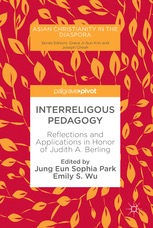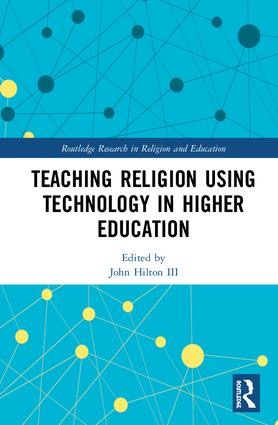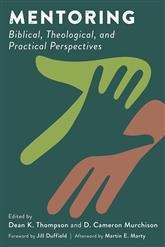student learning
Select an item by clicking its checkbox

Interreligious Pedagogy: Reflections and Applications in Honor of Judith A. Berling
Date Reviewed: January 17, 2019
In 2016, former students of Judith A. Berling, renowned for her interreligious pedagogy, held a symposium in honour of her retirement from the Graduate Theological Union in Berkeley, California. This collection of essays is the result. Readers looking for an introduction to Berling’s pedagogy are advised to consult Berling’s seminal work, Understanding Other Religious Worlds: A Guide to Interreligious Education (Orbis, 2004) – affectionately referred to by her students as the “Purple Book.” In this volume, readers will find a wide-ranging set of contexts within which Berling’s students have creatively applied and extended Berling’s method, especially her five “threads” of theological learning.
The seven essays are introduced by the editors and bookended by a preface and concluding reflections by Berling. In her reflections, Berling discusses the essays in an order that may be a more productive way of reading them: chapters 5 and 2 (issues in teaching today’s undergraduates); 7 and 4 (extending her pedagogy beyond the religion or theology classroom); 6 and 3 (attending to the social process of ‘othering’); and 8 (a meta-reflection on conceptual frames and assumptions). Preceding each essay, oddly for a book, is an abstract and list of key words. A remnant of the editing process seems to appear in the last paragraph on page 73.
While very diverse, the essays all attend to the importance of negotiating differences and crossing boundaries. Examples from the specific pedagogical experiences of the writers abound; while most deal with theology and religion, particularly within an Asian context and usually from a Christian setting, some essays boldly address the non-religious and secular, or areas outside the discipline of religious studies such as health sciences. The writers also demonstrate Berling’s emphasis on student-centred and collaborative learning, and the importance of the teacher “getting out of the way” (see Berling’s influential essay by the same title in Teaching Theology and Religion 1.1 [1998] 31-35).
A number of essays stand out. Emily Wu (chapter 4) shows that gathering oral histories can paradoxically silence voices, and advocates a stance of “cultural humility” rather than aspiring to “cultural competence.” Elizabeth Gordon (chapter 7) suggests “spirituality” and “wisdom sharing,” instead of “religion” and “interreligious dialog,” as mediating language to include the secular in articulating traditions of human flourishing. Joanne Doi (chapter 6) creatively demonstrates the pedagogical value of pilgrimage (in this case to the second World War site of a Japanese concentration camp in the United States).
Berling underlines the urgency of the pedagogical task outlined in this book: “Understanding and negotiating difference, creating conversations and relationships across boundaries of difference, is one of the most important challenges in our diverse world” (130). Her students have bountifully indicated how they have each manifested this urgent task in their varied careers due to Berling’s profound influence. “Berling’s vocation, teaching, and scholarship have had a ripple effect in widening circles, indeed building the foundations of cross-cultural and intercultural understanding” (87).
“Toto, we’re not in Kansas anymore.” So many of our students have a “Dorothy” experience when they enter theological and religious education. Our classrooms are not what they have had previous experience of. Our classrooms are not the local church, not Bible college, not the family reunion, not church ...

Teaching Religion Using Technology in Higher Education
Date Reviewed: December 14, 2018
This edited volume – the first of its kind – is incredibly valuable for teachers interested in integrating particular technologies into their classrooms. Among the hundreds of scholarly articles and dozens of books about how to incorporate technology into teaching and learning, such as Michelle Miller’s Minds Online (2016, Harvard University Press) and José Antonio Bowen’s Teaching Naked (2012, Jossey-Bass), some articles have focused specifically on the teaching and learning of religion. For example, recent scholarship has shown how 360-degree cameras and virtual reality headsets allow students to become visually immersed in distant religious environments, facilitating an empathetic understanding and ethnographic analysis of religious place, ritual, and behavior (Johnson, “Using virtual reality,” Teaching Theology and Religion 21[2018]: 228-241). Another article looks at how social media technologies might increase student engagement and active learning, for example, when students tweet about experiences of martyrdom from the perspective of the martyr, the crowd, and the persecutors, and compare types of media used to communicate from a position of power and political or social vulnerability (Warren, “Teaching with Technology,” Teaching Theology and Religion 19 [2016]: 309-319).
However, this is the first edited volume on the topic that explicitly addresses those who teach religion in higher education, and as someone who studies digital technologies and uses them for various pedagogical purposes, I thoroughly enjoyed reading it. I appreciated the diversity of technologies discussed, and the candor with which scholars acknowledged that not all technologies enhance or improve student learning. Richard Newton discusses strategies for using mobile devices as learning tools, such as providing backchannels (otherwise known as “live-tweeting”) for students to discuss and address questions while watching in-class films. David Kniep has students create podcasts interviewing religious practitioners, describing how the course challenged or deepened their prior understanding, and connecting scriptural texts to their contemporary world. Renate Hood argues that student response systems can increase student motivation, enhance classroom interaction, and lower students’ apprehension about engaging with religious, ethical, and personal topics. Kristy Slominski shows how clickers can encourage students to take stances on complex religious issues and acknowledge the range of perspectives within the classroom. Kyle Oliver discusses a variety of new media tools to help students visualize sacred sites, including virtual reality technologies such as Google Expeditions, Sites in 3D, and Google Earth, and online videos and picture repositories such as Sacred Destinations and Folkways.
Scholars also address how to leverage social media practices in and out of the classroom. Rob O’Lynn emphasizes the relational quality of social media. Brooke Lester identifies both positive and negative outcomes of social media use: while it can help students form connections and communities, it limits anonymity and sometimes subjects users to online abuse. Anthony Sweat shows how blended learning can help students achieve lower-order outcomes outside of class so that they can focus on higher-order outcomes of analyzing, evaluating, and creating in the classroom. Christopher Heard and Steven Rouse demonstrate that integrating interactive fiction stories did not increase motivation among students, suggesting that not all technology adaptation will improve learning outcomes. Finally, contributors explore ways that technology can expand the classroom, for example, through virtual guest lectures with experts in the field or through massive online open seminars.
The power of affirmation lies in the acknowledgement of a job well done. When colleagues applaud our success, we feel more a part of the enterprise, more connected, and more accepted. Being affirmed is being seen, noticed, made visible in erasing workplaces where so much of our work feels like ...

Mentoring: Biblical, Theological, and Practical Perspectives
Date Reviewed: December 13, 2018
In Mentoring: Biblical, Theological, and Practical Perspectives, Thompson and Murchison provide a thoughtful collection of essays on Christian mentorship. As a whole, this collection contributes to the growing body of scholarly work on mentoring by offering “windows on mentoring that are biblically grounded, theologically informed, communally diverse, and generationally attentive” (3). The book is divided into four parts, with each of the fourteen chapters highlighting the twenty-one contributors’ unique analyses and insights on mentoring and being mentored.
Part 1 surveys biblical perspectives on mentoring. As such, it begins with Brueggemann’s consideration of mentoring practices present throughout the Old Testament and concludes with a posthumous essay by Bartlett on passages in the New Testament that help to shed light on contemporary understandings of the term “mentor.”
Part 2 examines the nature and task of mentoring from a variety of theological perspectives and methods. Drawing on the fields of pastoral ministry (Currie), homiletics (Long), ethics (Miles), and feminism (Rigby), the authors provide a range of mentoring models and resources that underscore the importance of positive mentoring relationships and practices in the formation of strong Christian leaders. On this Rebekah Miles writes, “Christian mentoring should include discussion of the ways that our professional goals contribute to the larger goals of Christian life” (83).
Part 3, “Diverse National and International Communities of Mentoring,” explores Christian mentoring practices as shaped by particular contexts, including race, gender, and ethnicity. Those who wish to think critically about dominant systems of oppression, such as racism, xenophobia, and sexism, and to foster concrete practices for inclusive mentoring within biblical-theological frameworks will find a wealth of resources in the essays by Pollard, Cannon, De La Rosa, and Kwok. Of particular note is Canon’s proposal that womanist mentoring is a vocational call, “to do the work your soul must have” (123). This section also includes an historical essay by Johnson on mentoring in the Roman Catholic tradition.
Finally, Part 4 contains three coauthored chapters that discuss mentoring as a mutually supportive practice that occurs across generations. Ottati and Hinson-Hasty’s essay, “Mentoring toward a Humane Disposition, Attitude, and Imagination,” describes mentoring relationships between the teachers and student, while Nishioka and Lowry and Wardlaw and Murray’s essays consider youth and cross-generational mentoring, respectively
The book closes with an afterword by Marty that skillfully and poetically weaves together the insights and value of this collection of essays. He writes, “It is impossible to speak properly about mentoring in entirely impersonal and theoretical terms. Mentoring is and is about a profound personal dimension of scholarly and pastoral work” (223).
Those working in theological schools or departments and in Christian ministry will find this collection of essays to be a valuable resource on the virtue and art of mentoring. The strength of this volume lies not only in its biblical and theological reflections on mentoring, but also in the range of everyday lived experiences and perspectives from which the authors write.
